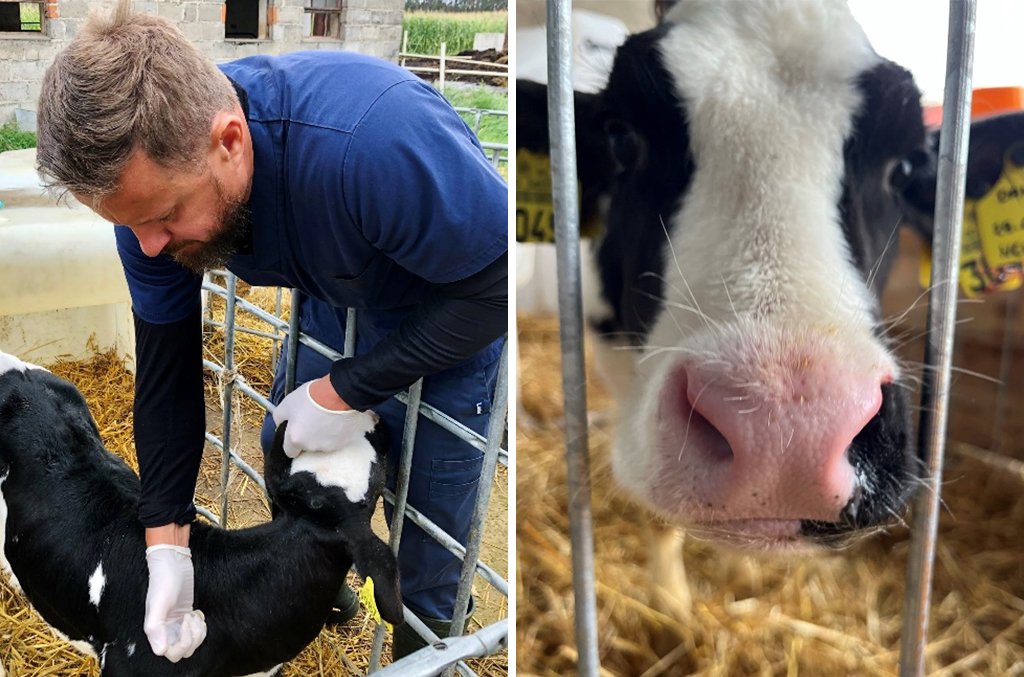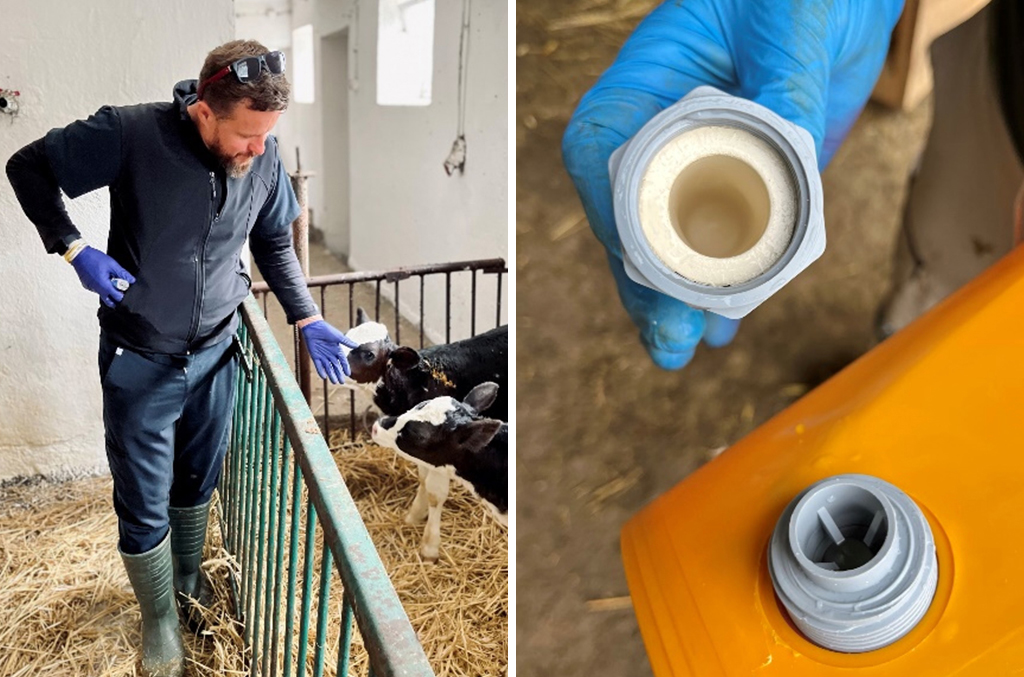Through the eyes of a veterinarian: CALVES

Is the physician responsible for checking the condition of calves?
Considering this topic in more detail, I believe a large part of this responsibility should fall on the zootechnician or the staff, but the proverbial “dotting of the i’s and crossing of the t’s” should always be done by the veterinarian.
In my practice, the control in calf pens is obvious and occurs cyclically, most often during reproductive visits. It should be noted here that not every breeder may want such controls, especially if it involves analysing mistakes made Fortunately, I see more and more conscious breeders who understand that calves are, after all, the future of their farm.
The goal is always the same – caring for the health of calves, ensuring their proper nutrition and provide good living conditions.
When conducting an audit of the herd and focusing on animal welfare, I pay attention to a number of factors.
1) Microclimatic conditions in the calf pen
The first thing I check when entering the calf pen is the temperature, humidity, and airflow. The rule is simple: when you see vapour in the breath, it means the humidity is too high. It’s also important to check if water is dripping from the ceiling. Additionally, there should be no drafts in the pen, so fans are often installed at the appropriate height to ensure proper air circulation. Securing the windows with nets to limit bird access to the calf pen is highly recommended. Birds carry salmonella, E. coli bacteria, and parasites.
2) Appearance of the calves
Another important point is the appearance of the calves, which tells us a lot about their health, nutrition, and the conditions in which they live. Generally, I check if the calves look healthy.
What does that mean?
Primarily, I assess:
– whether they have the appropriate weight and height for their age.
– the condition of their coat.
– whether there are any bald spots around the anus.
– whether they are panting or coughing while moving.
– visually the condition of their stool.
3) Conditions in which the calves live
The condition of the pens and huts is crucial to maintaining calf health. Therefore, I check whether the pens or huts are dry, freshly bedded, and free from faces. If I see a hut with streaks of manure, I suspect several things, including whether the calf is currently suffering from diarrhoea or whether the hut was not properly cleaned after the previous use. It is also important to monitor the disinfection of pens/huts, bedding and pathways between them.

4) Calves’ behaviour
Upon entering the calf pen, I check whether the calves are calmly resting, lying down, or bleating for food. I also observe if they are excessively scared when an unfamiliar person enters, which may suggest that the staff is yelling at them!
5) Hygiene of feeding equipment
Maintaining proper hygiene for calf feeding is crucial for healthy growth and preventing the spread of diseases; therefore, whenever possible, I control this aspect of calves’ growth. I check the quality and cleanliness of the nipples and buckets. Buckets should always be cleaned, the nipple should be unscrewed and cleaned, and everything should be dried “upside down” to prevent flies from inhabiting them.
6) Milk
While checking the feeding, I also assess the quality of the milk, its temperature, and preparation, ensuring the proper ratio of powder to water. Cold milk can cause serious health issues, so it is always worth checking. It is also important to choose the right product for the specific problems in the herd. I must admit, I do not do this myself but I always ask a nutrition advisor because I believe it is quite an art!
When it comes to milk, I should also mention checking the colostrum feeding period. In my opinion, the most mistakes are made here. The colostrum is the source of passive immunity passed from the mother to the calf, and this period is the most crucial in the life of a newborn animal. Therefore, to ensure a healthy calf, it is important to carefully monitor this stage.
When discussing colostrum with the breeder, I pay attention to several points:
– When is the first colostrum given?
Remember, it must be given within the first two hours after birth, as the permeability of the intestines for immunological complexes decreases over time.
– How much colostrum does a calf drink?
I recommend that the first feeding be at least 2 litres.
– Is the quality of the colostrum tested?
Special devices to test colostrum quality are often unused in the barn, or a refractometer can be used.
– Is a colostrum bank created on the farm?
It is important to establish one, following these rules:
– The colostrum entering the bank must be tested with a refractometer.
– It should preferably come from a mother vaccinated against infectious diseases in her 2nd-3rd lactation.

If there’s any doubt about proper colostrum feeding, it is easy to check it. After 48 hours, we can take blood from the calf and assess antibody levels using a refractometer. With the result, we can see whether colostrum was given and whether it was administered in the right amount and at the right time. It should be remembered that this is only an additional test and a check-up because a low level of antibodies in the blood serum is “non-reversible” – it cannot be raised quickly by pharmacological means. This is primarily a check-up in a situation where we are unable to administer colostrum ourselves and this is performed by our staff. And as we know: trust, but verify! If testing shows that the antibody level is too low to protect the newborn calf, it should be isolated and attempts should be made to stimulate the immune system for faster development.
7) Infectious disease prevention
When controlling calf rearing on a farm, I always pay attention to preventive measures. We all know the principle: prevention is better than cure!
How does this work in practice?
It is important to establish a vaccination schedule with the veterinarian, tailored to the farm’s specific needs. These vaccinations primarily aim to prevent lung diseases, diarrhoea, and fungal infections, as well as regular deworming.
Why is it so important that calves do not get sick during their growth period?
Illnesses hinder calf growth, reducing the future productive potential of the cow. The growth period is when udder tissue is being formed.
Remember, calves are the weakest link in the herd, but at the same time they are its future! Let’s pay attention to the conditions they live in, the hygiene of their feeding, and whether they are protected from infectious diseases, and they will surely reward us as healthy, productive cows in the future.

DVM, Michał Barczykowski



